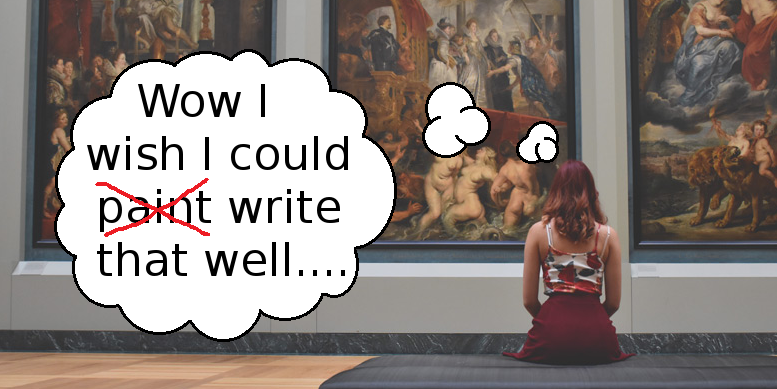Last week on Masterpiece Monday we started the series Awesome Authors DO-ing Writing DON’Ts, and this week I’d like to continue with another addition.
When we read articles about writing online or attend writing groups and such, we’re often told NEVER to do certain things. Never tell always show, never use adverbs, never use ellipses, never use more than two adjectives at a time, etc. etc.
While many of those are usually good advice, they can be a real hindrance if stuck to all the time. I talked previously about how forcing myself to always show in my writing and never tell held me back.
This week I’d like to talk about the passive voice. As writers we’re often told to avoid the passive voice like the plague, opting for the active voice instead. For just a quick refresher, the passive voice is when something is done to the subject of the sentence, whereas the active voice is when the subject of the sentence does something.
Here’s some sentences to show the difference:
Passive Voice:
The pizza was eaten by the dog.
Voldemort was defeated by Harry Potter.
Laughter could be heard.
Active Voice:
The dog ate the pizza.
Harry Potter defeated Voldemort.
(I, you, someone) heard laughter.
The difference between passive and active voice can be striking. Even though the sentences are technically saying the same thing, the way they say it is completely different. The passive sentences are longer and feel detached and airy, whereas the active sentences are shorter and feel more concrete and solid.
But here’s the thing: sometime you want to sound detached and airy.
I just recently learned about Garth Nix’s Old Kingdom trilogy, and started reading Sabriel, the first book in the series. I loved the opening paragraph, which just so happened to use the passive voice quite a bit:
“It was little more than three miles from the Wall into the Old Kingdom, but that was enough. Noonday sunshine could be seen on the other side of the Wall in Ancelstierre, and not a cloud in sight. Here, there was a clouded sunset, and a steady rain had just begun to fall, coming faster than the tents could be raised.”
Two instances of passive voice in two sentences in a row?! I can see the monocles popping out of its detractor’s eyes.
But yes, the passive voice works great here. The author is describing the scenery in a detached, airy way, as if we’re seeing it through foggy rain. That’s the feeling he’s going for, and it works perfectly by using the passive.
Plus the passive works great in contrast to the active voice in the very next paragraph:
“The midwife shrugged her cloak higher up against her neck and bent over the woman again, raindrops spilling from her nose onto the upturned face below. The midwife’s breath blew out in a cloud of white, but there was no answering billow of air from her patient.”
Suddenly we go from a zoomed-out description of the setting into a zoomed-in description of inside a specific tent. The passive voice worked great to keep us far away for the first paragraph, and the active voice worked great to bring us in close for the second paragraph.
It’s a bit of a subtle thing, but it almost feels like we’re zooming in from the sky to right inside a tent, as if we’re watching a movie camera zoom in, or as if we’re starting off hearing someone tell us a story and then we go into seeing it for ourselves. That effect would not have been achieved as well if the author had simply used the active voice in both paragraphs.
Of course using the passive voice too much or in the wrong places can be detrimental. But it shouldn’t be thought of as wrong to use all the time. Sometimes, as an artist, you have to use finger paints to achieve what you want – and sometimes, as a writer, you have to use the passive voice to achieve what you want.
It can be a little messy, sure, but it shouldn’t be thought of as inherently bad – it’s just another tool in your writing toolbox.
(Featured image via GAHAG, edited by me)

Comments are closed.